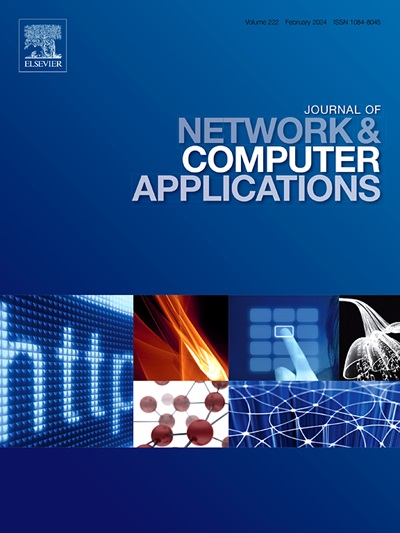On the network coding-based D2D collaborative recovery scheme for scalable video broadcasting
IF 7.7
2区 计算机科学
Q1 COMPUTER SCIENCE, HARDWARE & ARCHITECTURE
引用次数: 0
Abstract
This paper examines the collaborative recovery issue for the scalable video broadcasting (SVB) system, where two proximate user nodes are able to maintain a local out-of-band device-to-device (D2D) pair to cooperatively recover their lost broadcasted packets. Traditional error protection methods, such as Forward Error Correction (FEC) and error concealment, often require the source node to dynamically adjust its broadcast content based on feedback from user nodes. However, in many practical SVB scenarios, such as mobile TV broadcasting systems and satellite-based video broadcast virtual file systems, user nodes are merely recipients of broadcast messages and cannot feasibly report their reception status back to the source node (i.e., feedback-free). To address these challenges, we propose the Network Coding based Collaborative recovery scheme for SVB, named NC–SVB. NC–SVB deviates from previous studies by employing a feedback-free transmission model, wherein the source node neither receives updates on reception status nor channel conditions from the user nodes, nor does it dynamically modify its broadcast content. By utilizing the designed coding window sliding mechanism and the collaborative video layer scheduling algorithm, each user node can independently maintain a sliding coding window, generate optimal network coded packets, and collaborate recovery for the partner in a timely manner. The theoretical bounds of reliability and decoding delay for NC–SVB have been analyzed. Experimental results demonstrate that NC–SVB, compared to existing schemes, enhances the collaboration throughput, achieves higher decoding rates, offers lower decoding delays, as well as improved video playback quality.
求助全文
约1分钟内获得全文
求助全文
来源期刊

Journal of Network and Computer Applications
工程技术-计算机:跨学科应用
CiteScore
21.50
自引率
3.40%
发文量
142
审稿时长
37 days
期刊介绍:
The Journal of Network and Computer Applications welcomes research contributions, surveys, and notes in all areas relating to computer networks and applications thereof. Sample topics include new design techniques, interesting or novel applications, components or standards; computer networks with tools such as WWW; emerging standards for internet protocols; Wireless networks; Mobile Computing; emerging computing models such as cloud computing, grid computing; applications of networked systems for remote collaboration and telemedicine, etc. The journal is abstracted and indexed in Scopus, Engineering Index, Web of Science, Science Citation Index Expanded and INSPEC.
 求助内容:
求助内容: 应助结果提醒方式:
应助结果提醒方式:


